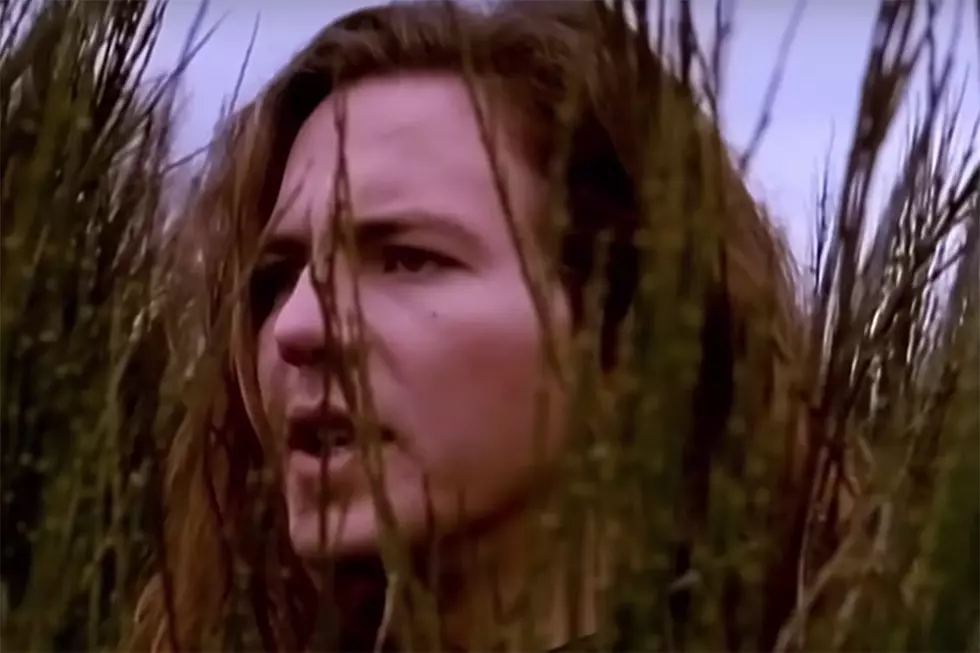
The Moment When Temple of the Dog’s ‘Hunger Strike’ Came Together
Eddie Vedder was surprised at his own behavior at London Bridge Studios in Seattle one day in late 1990. It wasn’t his style at all to do what he’d just done – to move up to a microphone and start singing along with someone else’s band. Fortunately, that band’s singer was Chris Cornell, he appreciated Vedder’s input, and the moment became an event in rock history.
Neither Vedder’s Pearl Jam – soon to change their name from Mookie Blaylock – nor Cornell’s Soundgarden were big deals at the time, although they’d become so very soon. Members of both bands were working on an album under the title Temple of the Dog to mark the passing of their friend, Mother Love Bone frontman Andrew Wood.
Wood, once a roommate of Cornell’s, had died of a heroin overdose in March 1990, and his musical friends shared a desire to mark his memory. “Andy was effervescent,” Cornell said in 2016. “He was very charismatic and funny, sort of in a prankster way, but also self-deprecating while at the same time being this larger-than-life rock star. He acted the way I imagine Freddie Mercury did when I see documentaries about Queen’s early years. In a sense, he was making his own reality. In his mind, he was already a rock star and he was waiting for the rest of the world to figure it out.”
The death had left Cornell in a world of grief, which he could only struggle through by writing. Straying from his usual approach, the dynamic frontman wrote about Wood instead of people he’d made up. “I’d normally write a character that was part me and part a fictional character,” he explained. “But these lyrics specifically reflected Andy and my feelings about him. … I didn’t let anything else in. It was precious.”
Vedder, who’d just arrived in Seattle to join his new band, was in the studio while his colleagues Mike McCready, Stone Gossard and Jeff Ament recorded with Cornell and his bandmate Matt Cameron. The song under development was “Hunger Strike,” the last of 10 to be written for the Temple of the Dog album. Cornell felt he wanted one more track to balance the work, but he wasn’t expecting much from it. In fact, his kernel of an idea for the lyrics was so small that he only had one set of verse, bridge and chorus.
Vedder later recalled seeing events unfold on what was the fourth or fifth day after his arrival in Seattle. “I got to watch these songs, and watch how Chris was working, and watch Matt play drums,” he said in the book Grunge Is Dead: The Oral History of Seattle Rock Music. “It got to ‘Hunger Strike’ — I was sitting in the corner, putting duct tape on a little African drum. About two-thirds of the way through, he was having to cut off the one line, and start the other.”
He felt an urge to react – just like he had when he’d written three sets of lyrics for early Pearl Jam demos, which had got him the job. “I’m not now, and certainly wasn't then, self-assured or cocky,” he remembered, “but I could hear what he was trying to do, so I walked up to the mic – which I'm really surprised I did – and sang the other part, ‘Going hungry, going hungry.’”
Cornell recalled in 2016: “Eddie just kind of shyly walked up to the mic and started singing the low ‘going hungry’ and I started singing the high one. When I heard him sing, the whole thing came together in my brain. I just felt like, ‘Wow, his voice is so great in this low register. He should sing on it. I’ll sing the first verse and then he’ll come in. Even though it’s the same lyrics, it’s a different singer and it’ll feel like two verses.’”
Vedder was then invited to record his contribution – the first time he’d ever appeared on a full-fledged album release. “I really like hearing that song,” he later reflected. “I feel like I could be real proud of it – because one, I didn't write it, and two, it was such a nice way to be ushered onto vinyl for the first time. I'm indebted to Chris time eternal for being invited onto that track.”
Temple of the Dog was released on Apr. 16, 1991, selling 70,000 copies and receiving respectable reviews, then vanished. However, A&M Records looked back a year later and realized that in the intervening time both Soundgarden and Pearl Jam had become leading lights of a scene becoming known as grunge, with their respective albums Badmotorfinger and Ten. Temple of the Dog was re-released with “Hunger Strike” as its lead single, the song reaching No. 4 and helping its parent LP reach platinum sales.
The band never played any complete shows in the ‘90s, although a handful of their songs were performed whenever Pearl Jam and Soundgarden got together, or when one singer guested with the other’s band. That finally changed in 2015 when everyone except Vedder took part in a brief 25th anniversary tour, and the audiences sang his part of “Hunger Strike.”
Temple of the Dog - ‘Hunger Strike’
More From Ultimate Pearl Jam









